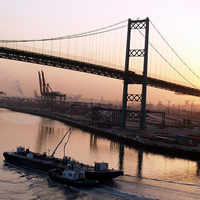The United States is entering negotiations this week to join the Trans-Pacific Partnership (.pdf), a relatively unknown trade agreement that includes Brunei, Chile, New Zealand, and Singapore. The pact is perhaps humble in its origins, with the population of its largest member -- Chile -- less than 16 million at the time of its inception in 2005, and the group's share of global GDP minute. But the TPP has quietly gained momentum over recent years and may come to serve as a free trade zone that incorporates large parts of both sides of the Pacific. In addition to the United States, three other countries -- Australia, Peru, and Vietnam -- will be sitting in on the membership talks being held in Melbourne, while Canada, Malaysia, and Mexico may initiate entry talks in the near future.
Free trade agreements have proliferated throughout Asia over the past decade. In 2000, there was only the loose ASEAN pact and APEC to speak of, with APEC -- though foundering -- being the largest. Today there are more than 150 in force that include at least one Asian nation, and another 50 or so are under negotiation. Among them, the TPP is both unique and promising, for two reasons. It is impressively comprehensive, calling on Chile, New Zealand, and Singapore to liberalize all goods -- with a relatively small list of exclusions -- over time, and Brunei to cut tariffs on 99 percent of products. And it is expressly open to new members, a rare feature.
The Asia-Pacific is already a large market for the U.S., with APEC economies accounting for more than $747 billion in exports in 2008. A working Asia-Pacific free trade deal would likely increase real wages in the U.S. by a bit more than 1 percent, according to a University of Michigan study. Conversely, a deal excluding the U.S. would mean the loss of perhaps $25 billion in exports immediately, according to Jeff Schott at the Peterson Institute for International Economics. That equates to sacrificing about 200,000 high-paying jobs.

